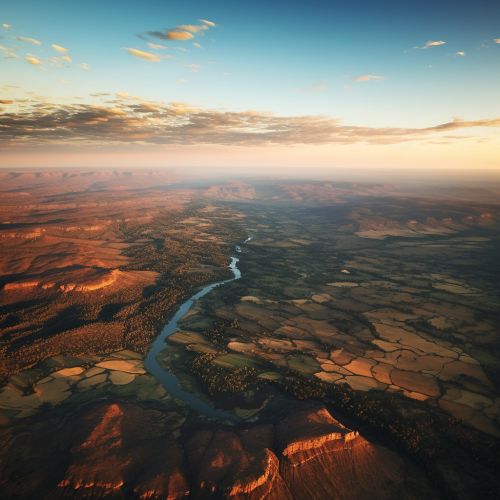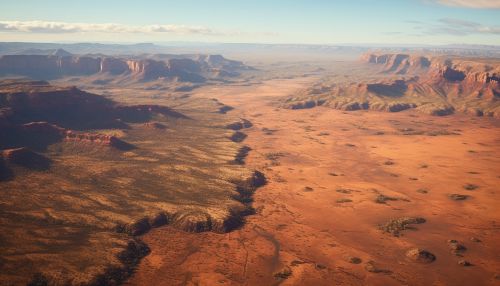Geography of Australia
Geography of Australia
Australia, officially known as the Commonwealth of Australia, is the world's sixth-largest country by total area. It is located in the southern hemisphere, between the Indian Ocean and the South Pacific Ocean. The geography of Australia encompasses a wide variety of biogeographic regions being the world's smallest continent but the sixth-largest country in the world. The population of Australia is concentrated along the eastern and southeastern coasts.


Physical Geography
The physical geography of Australia is extremely diverse, ranging from the snow-capped peaks of the Australian Alps to large deserts, tropical and temperate forests, and a rugged coastline. The continent of Australia is notable for its vast arid landscapes and the unique flora and fauna that have evolved to survive in such environments. The country's geography has been significantly shaped by millennia of geological processes, including continental drift and plate tectonics.
Landforms
Australia's landforms are primarily the result of gradual tectonic processes that have occurred over millions of years. The country's most significant landforms include the Great Dividing Range, the Australian Alps, the Great Barrier Reef, and the Outback. The Great Dividing Range, running parallel to the east coast of the continent from Queensland to Victoria, is the largest mountain range in Australia.
Climate
Australia's climate varies greatly throughout the country due to its size. It ranges from tropical monsoons in the north, to a hot desert climate in the interior, to a temperate climate in the south. The El Niño-Southern Oscillation plays a crucial role in determining Australia's weather patterns by influencing ocean temperature and rainfall levels.
Flora and Fauna
Australia is renowned for its unique flora and fauna, much of which is found nowhere else in the world. This is largely due to the continent's long geographic isolation, tectonic stability, and the effects of an unusual pattern of climate change on the soil and flora over geological time. The country's biodiversity is incredibly rich, with a large number of endemic species.
Human Geography
Human geography in Australia is characterized by a concentration of population along the eastern and southeastern coasts, with the interior of the country being sparsely populated. The country's urban areas are typically located along the coast, with the largest cities being Sydney, Melbourne, Brisbane, Perth, and Adelaide.
Population Distribution
The majority of Australia's population is concentrated in two states: New South Wales and Victoria. The largest city in Australia is Sydney, which is also the most populous city in Oceania. Other major urban areas include Melbourne, Brisbane, Perth, and Adelaide.
Cultural Geography
Australia's cultural geography is as diverse as its physical geography. The country is a multicultural society with a significant Indigenous population, the Aboriginal Australians, who have lived on the continent for over 60,000 years. The culture of Australia is also heavily influenced by its history as a British colony and its geographical proximity to Asia.
